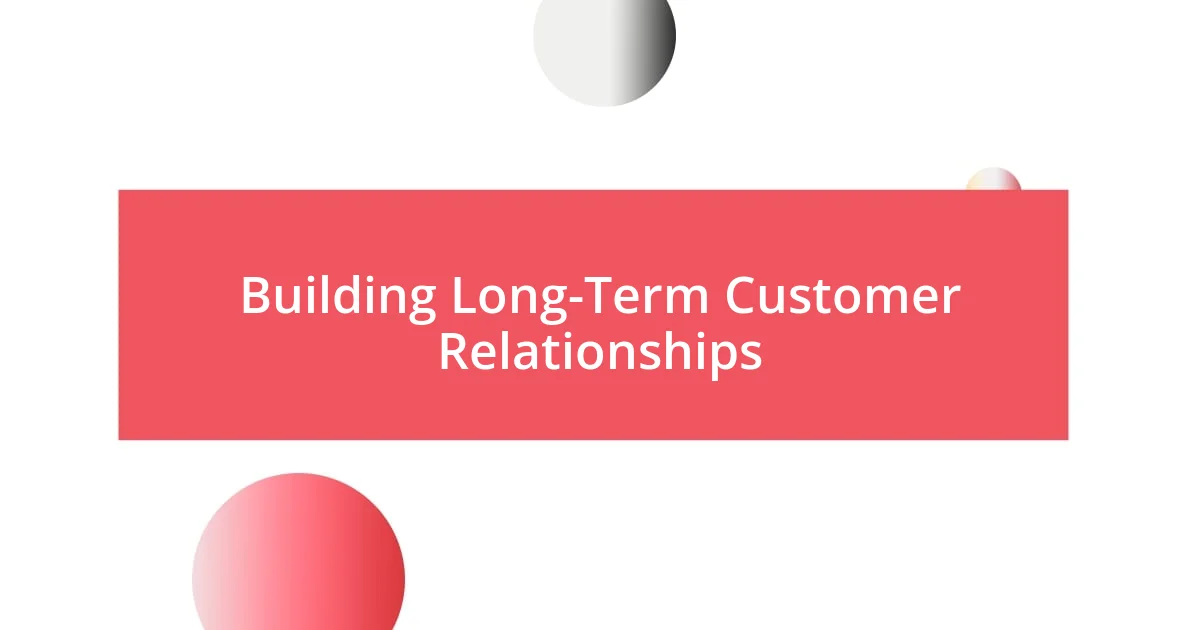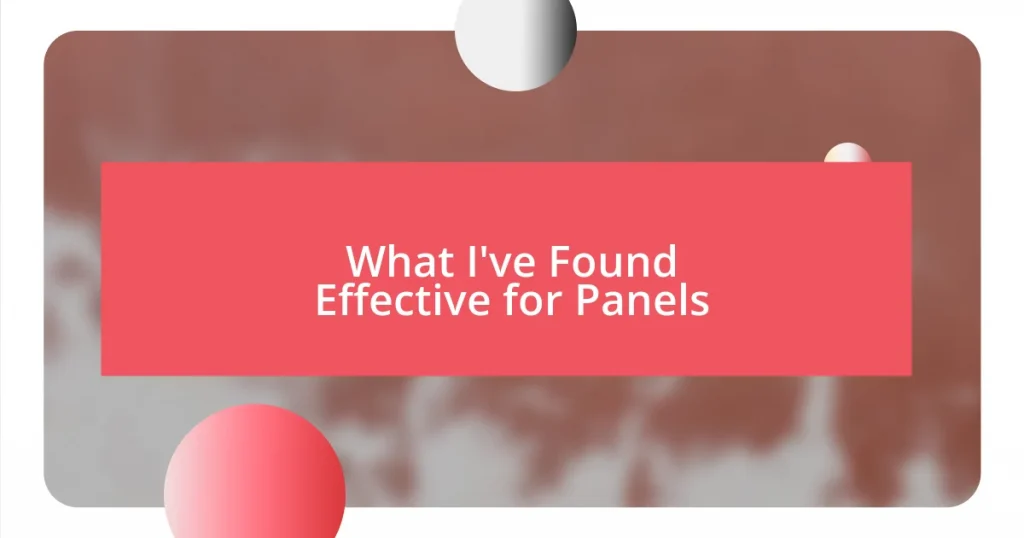Key takeaways:
- Understanding your audience involves deeper insights beyond demographics, focusing on emotional triggers and genuine connections through surveys and storytelling.
- Engagement through varied content types and user-generated content enhances authenticity and builds trust within your audience.
- Soliciting and implementing customer feedback leads to impactful changes in marketing strategies, fostering long-term relationships and community involvement.

Understanding Your Target Audience
Understanding your target audience is like trying to find the perfect song for a playlist—you need to know what vibes resonate with them. I’ve learned that conducting detailed surveys and one-on-one interviews can reveal not just demographics, but the hopes, dreams, and struggles that define your audience. Have you ever noticed how a simple question can unlock a treasure trove of information?
Once, I decided to host a casual focus group over coffee with some potential customers. Honestly, it was such an enlightening experience; their stories were raw and heartfelt. They shared why they needed my product, and I realized that what I assumed were their pain points were merely the tips of the iceberg. What lies beneath that surface can often dictate their buying decisions.
On a broader level, I’ve come to appreciate that understanding your audience is an ongoing journey. It’s not just about demographics; it’s about the emotional triggers that compel them to engage. When was the last time you really tuned into what your audience is saying—both through their words and their silence? Their insights can lead you to create marketing strategies that not only speak to them but also inspire loyalty.

Creating Engaging Content
Creating truly engaging content requires a deep understanding of not just what your audience values but how they prefer to consume information. For example, I once tested the effectiveness of videos versus blog posts. While I held a bias towards written content, the engagement on a simple how-to video blew me away. People love visuals; they want to be entertained, informed, and inspired all at once. So, I’ve made it a point to incorporate more multimedia into my marketing strategy. Have you tried varying your content type?
Storytelling can be a powerful tool in creating connections with your audience. One time, I shared a personal story about a significant challenge I faced and how it led to the inception of my business—it felt like I could almost hear the collective gasp from listeners. You could feel the energy shift in the room: suddenly, my audience saw me as a relatable figure rather than just another marketer trying to make a sale. It’s clear to me now that vulnerability can bridge distance, allowing you to forge deeper relationships with your audience.
Another element I’ve found valuable is the importance of user-generated content. When clients share their success stories using my products, it not only validates my efforts but also enhances trust with potential customers. I’ll never forget the moment a customer posted a video of themselves using my product at a milestone event. That post echoed through our community—conveying authenticity and relatability in ways that polished ads simply can’t. User stories amplify your message, showcasing real-life applications that resonate.
| Content Type | Engagement Level |
|---|---|
| Blog Posts | Moderate |
| Videos | High |
| Infographics | High |
| Social Media Posts | Variable |

Utilizing Social Media Effectively

Utilizing Social Media Effectively
Social media is a potent tool for connecting with your audience in real-time, and I’ve genuinely enjoyed experimenting with different platforms to see where my brand fits best. I once launched a spontaneous Instagram Live session to share some insights about my journey. The immediate feedback and interaction exceeded my expectations, and it felt like I was having a heartfelt chat with friends rather than just broadcasting my thoughts. It’s moments like these that highlight the magic of social media—the ability to create authentic conversations.
An essential aspect of harnessing social media effectively is consistency and authenticity in your messaging. The challenge for me was finding the right balance between professional and relatable. Here’s what I’ve found valuable in my approach:
- Engage daily—post regularly to keep your audience involved.
- Use stories—platforms like Instagram and Facebook are perfect for sharing genuine behind-the-scenes glimpses.
- Prioritize interaction—respond to comments and messages; it makes followers feel valued.
- Experiment with formats—try polls, quizzes, or live Q&A sessions to keep the content fresh and engaging.
- Celebrate your community—share user-generated content to amplify authentic connections.
I recall a time when I celebrated a small milestone by thanking my followers through a heartfelt post, and their responses were overwhelming; they loved being part of my journey. This involvement matters—when people feel included, they become ambassadors for your brand.

Implementing Email Marketing Strategies
Implementing email marketing strategies has been a game changer for my business. I remember the first time I crafted a targeted email campaign, focusing on a specific product launch. The excitement I felt when opening the analytics to see a significant increase in engagement and sales was invigorating. What surprised me most was how a simple subject line tweak could dramatically alter open rates. Have you ever thought about how crucial those few words can be?
One strategy that I’ve found particularly effective is segmenting my email list based on customer behavior. For instance, after analyzing purchase patterns, I sent tailored emails to previous buyers, offering special promotions on related products. The response was overwhelming; many customers replied, sharing their excitement about the personalized experience. It’s a reminder that people appreciate being recognized as individuals, not just numbers on a list. Have you explored different ways to segment your audience?
Additionally, incorporating storytelling into my email content has fostered deeper connections with my subscribers. I vividly recall sharing a behind-the-scenes look at my team’s journey to create a new product. The feedback was heartwarming—my audience felt like they were part of the process, not just passive recipients of information. This sense of inclusion led to a rise in not just opens and clicks, but genuine conversations and engagement. Have you tried weaving personal narratives into your emails? It can make all the difference.

Measuring Your Marketing Success
Measuring your marketing success can feel like navigating a maze, but I’ve discovered that data and intuition often go hand in hand. For me, tracking metrics like conversion rates and engagement levels has provided a tangible way to assess what resonates with my audience. Remember that exhilarating moment when you realize a campaign not only hit its target but exceeded it? It’s electric!
I find that using tools like Google Analytics and social media insights can feel overwhelming at times, but they’re invaluable in revealing patterns and trends. For instance, when I noticed a high bounce rate on my website, it prompted me to take a closer look at my content and design. I revamped a few key areas, and the improvement in user retention was significant. Have you ever felt that rush of seeing numbers turn in your favor after making those small adjustments?
Recently, I initiated A/B testing on my ads, and the results were enlightening. Testing different visuals or calls-to-action helped me understand what truly appeals to my audience. When I saw one version outperform the other by a landslide, it affirmed the importance of experimenting and learning. This continuous cycle of measuring and adjusting isn’t just about numbers; it’s about connecting with your audience on a deeper level. What insights have you gained from measuring your own marketing efforts?

Adjusting Based on Feedback
Adjusting based on feedback has been a critical part of my marketing journey. I vividly remember launching a campaign that didn’t resonate quite as I had hoped. Instead of feeling discouraged, I reached out to my audience for their insights. The candid responses I received sparked new ideas and ultimately led to a refreshed campaign that both I and my audience loved. Have you ever considered how valuable direct feedback can be for your marketing efforts?
One particularly striking moment occurred when I revamped my social media strategy after listening to follower suggestions. A few customers mentioned they’d love more interactive content. So, I added polls and live Q&A sessions, which not only increased engagement but also created a vibrant community around my brand. This experience taught me that making small changes based on feedback can lead to substantial improvements. Have you experienced a shift in your audience’s engagement after trying something new?
I regularly keep a pulse on customer feedback through surveys and social listening tools. There’s something enlightening about seeing what your audience truly thinks. Recently, I discovered that many of my subscribers wanted more educational content rather than promotional messages. This insight inspired me to develop a series of informative webinars, enriching my relationship with my audience while addressing their needs directly. Are you tapping into your audience’s voice to drive your marketing decisions?

Building Long-Term Customer Relationships
Building long-term customer relationships isn’t just about making a sale; it’s about nurturing a connection over time. I’ve found that personal touches, like sending a handwritten thank-you note after a purchase, can leave a lasting impression. Have you ever noticed how something small can make someone feel valued? That sense of appreciation fosters loyalty and keeps customers coming back.
Engaging with customers beyond the transaction is crucial. I remember hosting a customer appreciation event that turned into a delightful evening of connection and conversation. Seeing familiar faces—those customers who had once been strangers—made me realize how relationships can transform. They didn’t just leave with good products; they walked away feeling part of a community. Have you thought about creating experiences that strengthen your ties with your customers?
Listening actively to customers is paramount. I maintain an open channel for feedback through emails and social media. Once, I received a heartfelt message from a customer who suggested a product improvement. That interaction not only guided me toward valuable changes but also made her feel seen and heard. Isn’t it rewarding to know that you can influence your product based on customer insight? When customers feel their opinions matter, they invest emotionally in your brand, creating a lasting bond.















